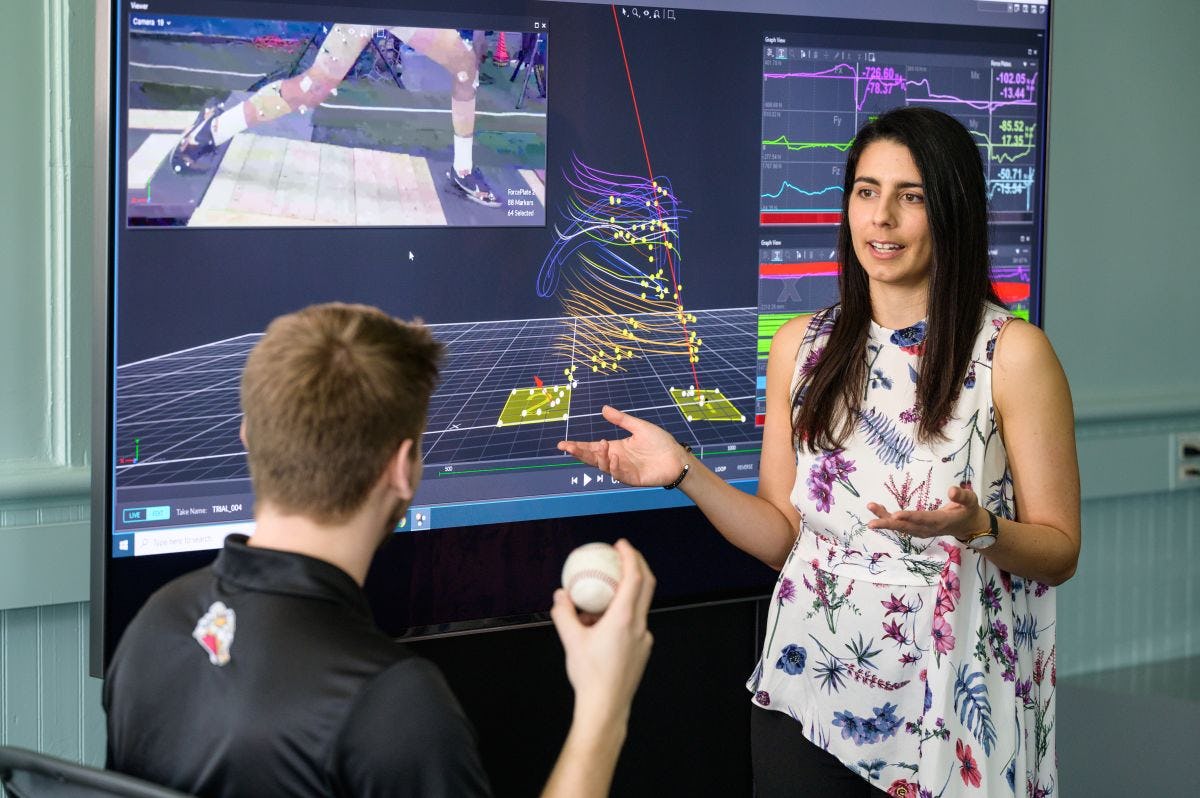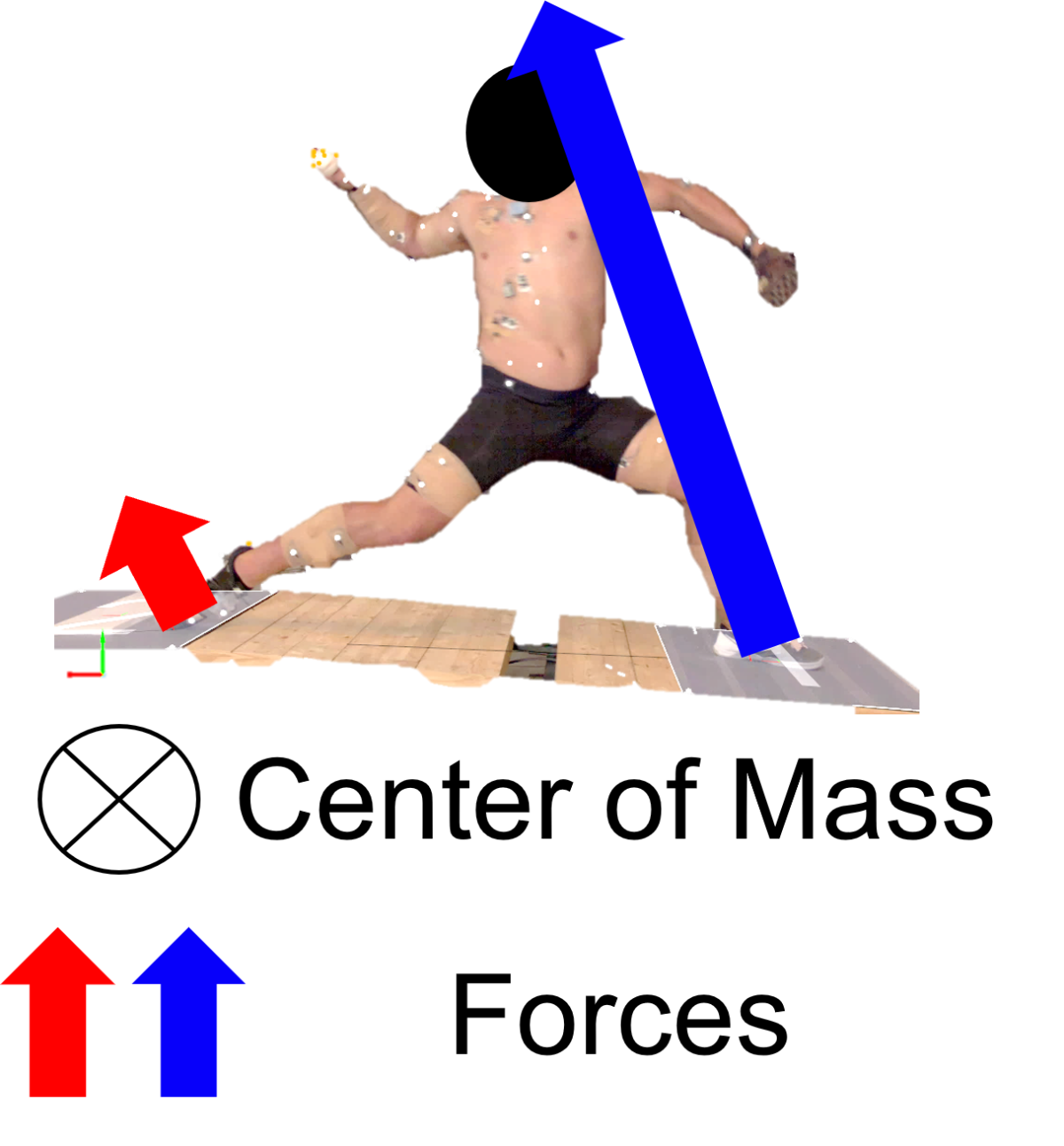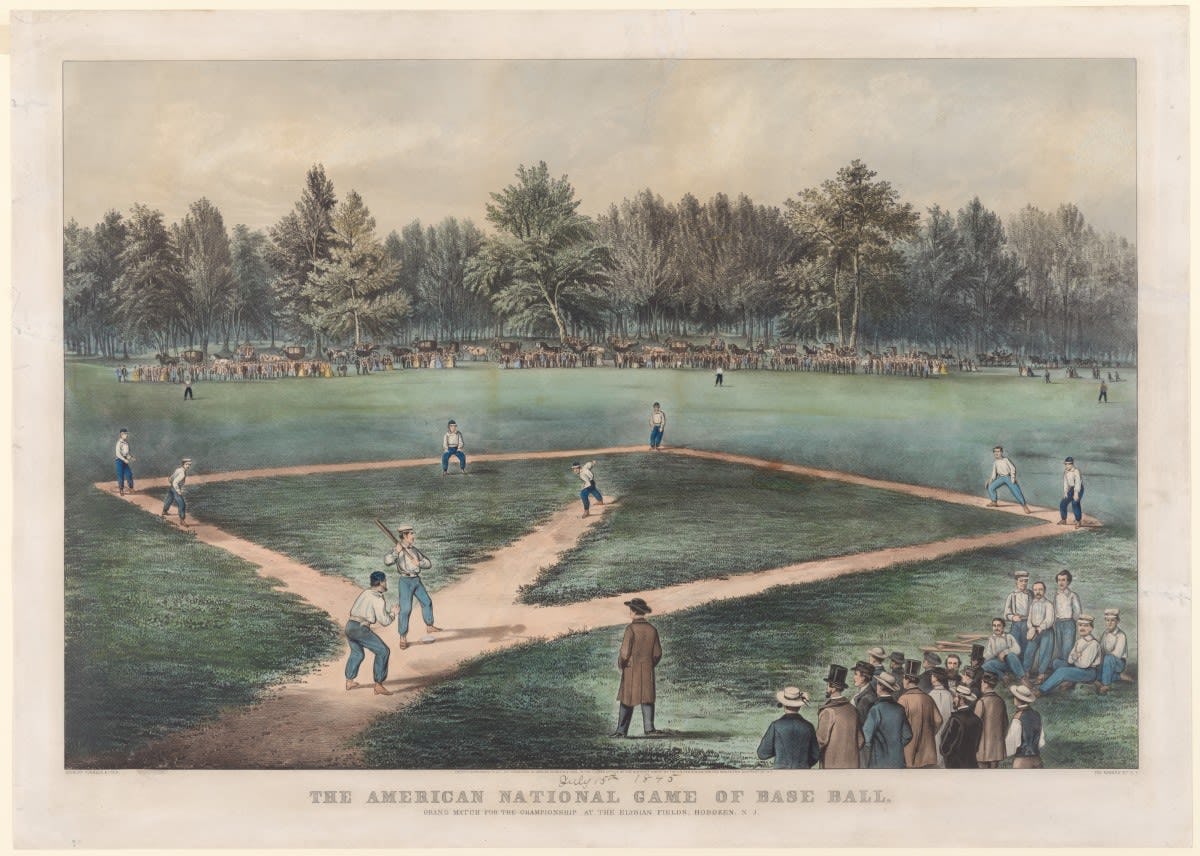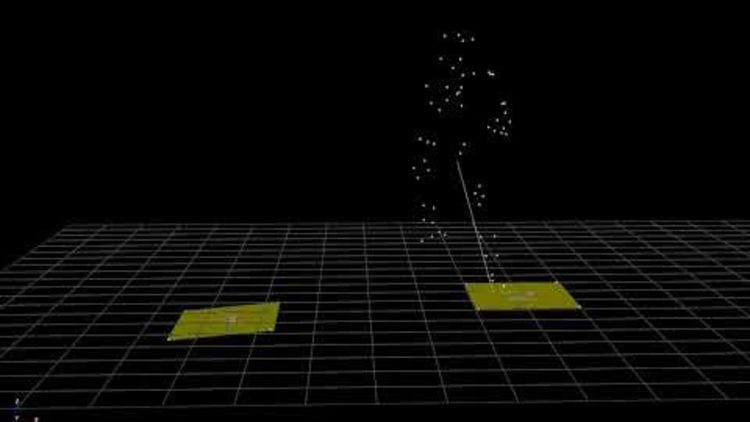As baseball returns for another spring, research teams unpack pitchers' biomechanics by analyzing data collected with Major League Baseball's support
Stevens property was the birthplace of baseball as we know it today. The first game played between two clubs, under modern rules — foul lines, 3 strikes to an out, etc. — took place in June 1846 on a riverside field just north and downhill from the present-day campus quad and towers. (The New York Base Ball Club thumped Alexander Cartwright's Knickerbockers that day, 23-1, for the record.)
Now, nearly two centuries later, Stevens researcher Antonia Zaferiou has initiated a data-focused effort to analyze pitching mechanics in an effort to both preserve body health and develop pitching power and velocity.
Understanding pitching, from the ground up
During the three years since Zaferiou joined Stevens as a biomedical engineering professor, approximately 15 undergraduate and graduate students have spent time as research assistants working on baseball biomechanics projects. Her Musculoskeletal Control and Dynamics lab engages students in research — funded by Major League Baseball and in collaboration with Rush University — that examines how pitchers generate momentum and control body movement.
Long-term, this research could help pitchers improve performance while reducing their risk of injury — important in an era when studies show many young pitchers experience pain or injury while throwing, and more than half of all major league baseball injuries occur to pitchers.
"We are now understanding pitching biomechanics from the ground up," explains Zaferiou, a National Science Foundation CAREER award winner.
Previous pitching biomechanics research focused on body motion and linear propulsive forces, she points out.
"With our new analyses of how pitchers interact with the ground over time," says Zaferiou, "we are now able to analyze the linear and angular momentum needed to propel the ball — and beginning to provide mechanical explanations for why certain aspects of the pitching motion seem important."
In her Stevens lab, 20 infrared motion-capture cameras arrayed along the high ceilings measure the 3D motion of any subject sporting an outfit of reflective body stickers. Additional sensors hidden in the floor quantify weight transfer by measuring ground-interaction forces. Zaferiou uses these systems to study walking and turning gait, among other biomechanics research questions.
The same systems are also utilized by research teams in Zaferiou’s previous lab, at Rush University Medical Center in Chicago, where they are employed to measure pitching biomechanics using a customized practice pitcher's mound equipped with sensors.
Now, in collaboration with biomechanists, physical therapists and orthopedic surgeons who also serve as team physicians for baseball's Chicago White Sox, Zaferiou and her students work with two biometric data sets collected at Rush with groups of high school and minor-league-level professional pitchers.
Stevens doctoral candidate Jun "Sam" Liu analyzes the data collected from four minor-league pitchers, who donned reflective markers and pitched off a force sensor-instrumented practice mound as motion-capture cameras captured their body movements in minute detail.
He is focusing on the roles of the legs in generating impulse tied to movement as the pitchers stride forward during their pitching motions.
"Researchers have previously used peak force as a simple metric of pitching performance," he explains. "We are doing something new by looking at a measurement called 'impulse,' which is the summation of forces or torques across a duration of time in the pitching motion.
"Peak or maximum force is perhaps helpful when assessing the risk of acute injuries, but studying impulse allows us to study how momentum changes due to the action of forces over time."
Liu hopes to understand how these linear and angular impulses influence momenta before the ball is released.
He begins by calculating the body’s center of mass location, then examines how forces generate changes in linear momentum — a product of body mass and "center of mass" velocity. He also calculates changes in angular momentum, a measure of how quickly a pitcher's body mass rotates around center of mass.
"We are learning several interesting things," says Liu, pulling up complex three-dimensional graphs of force vectors. "The back leg is important. That is known by most coaches.
"But it may be even more important than initially thought, in ways that were not traditionally understood nor taught."
A pitcher's back leg typically drags behind the body during the forward stride before ball release. But this drag — which looks counterproductive in terms of forward propulsion of the body — may help facilitate the body’s rotation in the direction of the pitch, increasing body angular momentum and potentially facilitating increased speed on pitches.
"When we began, we did not really expect the dragging of the back foot to have played such a role in generating body rotation," says Liu. "It's just a small drag force, in the linear sense. But this tiny drag is one of the bigger contributors to generating rotation of the body.
"The small force applied backward, over a long duration of time, is able to generate a large angular impulse, increasing the body's angular momentum and facilitating its rotation due to its long moment arm."
More informed coaching, as well as squats and other plyometric exercises, can help pitchers develop the power, coordination and awareness to improve that power transfer.
"Of course, as biomechanists, we have to balance goals: to improve performance while trying to reduce the risk of injury, especially with developing pitchers," Zaferiou adds.
The work was presented in a short paper and oral presentation at the International Society of Biomechanics in Sports' (ISBS) September 2021 virtual conference, during which Liu was designated a finalist for ISBS' New Investigator Award. The work was then accepted and published as a paper in the journal Sports Biomechanics.
Scholar-athletes pitch in with additional research
Stevens graduate student Samantha Gajda ‘22, a former varsity field hockey and lacrosse player for the university from Moorpark, California, pitches in with biomechanics research as well.
For her project, she's examining the role of each leg in impulse generation in high school pitchers and the way that differs according to the type of pitch being thrown. How, for example, does the body translate movement while throwing a fastball, versus while throwing a changeup?
Gajda also explores pitchers' various mechanics strategies, in order to determine those strategies' effect on ball velocity — which can help coaches and players understand the combination of mechanics and strategies that contribute to faster ball speed.
To do all that, she analyzes a dataset collected from 23 high school pitchers at a baseball training facility outside Chicago during the summer of 2021 as part of the same Stevens collaborative study with Rush University.
"We are finding that some pitchers are dragging their back foot similar to professional pitchers," explains Gajda, "but others are lifting their back leg off the force plate."
"This has previously not been seen, and we are excited to understand what this means in terms of pitch speed.”
In previous years, other Stevens athletes such as master's students Alex Smith '21 and Roy Iversen '21 — both of whom pitched for the Ducks' varsity baseball squad — also worked in Zaferiou's lab taking various angles on pitchers' biomechanics for their thesis research.
Using the motion-capture software Motive, plus MATLAB processing and analytics software packages, the duo parsed the data collected by Rush to produce point clouds of markers placed on pitchers in motion as well as force vectors generated by pitchers' ground interactions in three dimensions.
Smith focused on studying pitchers' hip range of motion, which is key for pitchers just as it is for hitters. Too much hip rotation during a pitch, relative to one's maximum range of motion, could increase a pitcher's risk of injury over time; on the other hand, if hip range of motion is too limited, "that pitcher may not get maximum velocity on the fastball," he said.
Now, as another spring rolls around, what's on deck in Zaferiou's baseball-research lineup?
"In the future, we hope to learn from data from more professional pitchers," notes Liu. "We'd like to learn how the very best pitchers do what they do."
For more on Professor Zaferiou's sports science, sound biofeedback and other research projects, visit her laboratory website at www.zaferioulab.com.





